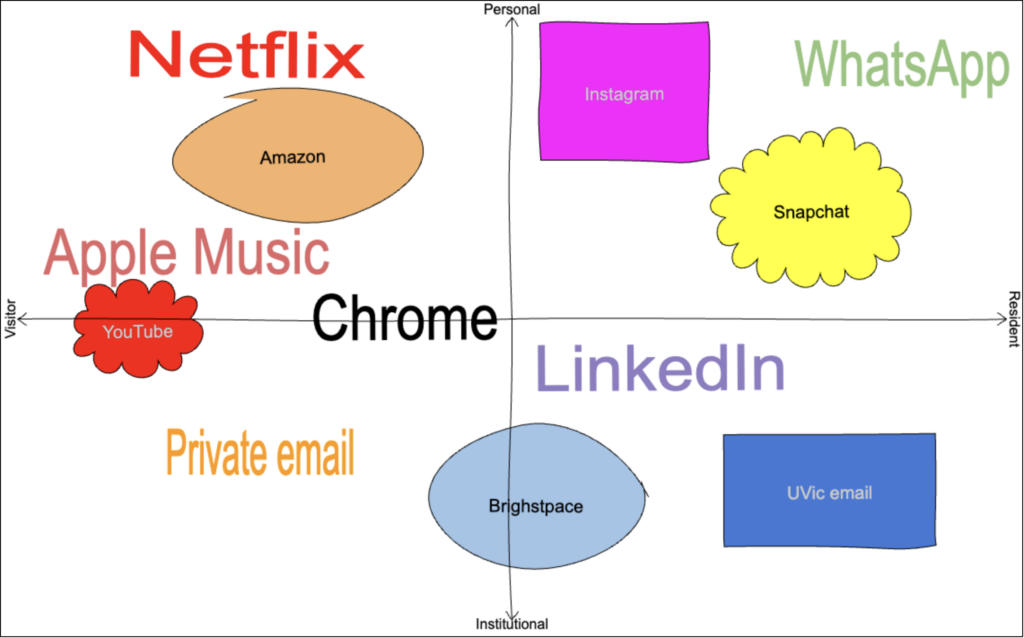Individuals born and growing up in an already highly digitalized world can be considered as resident in that world, while a person who was introduced to it later in life would be considered an visitor in it as they have to put in considerably more effort to learn how to maneuver in it compared to the former person since they have less basic knowledge of it. It is similar to the idea of a person born and raised in a french-speaking country who would be much more natural communicating in french compared to an anglophone adult who relocates to Paris and tries to learn the language then and there. The former person would be considered a french native and the latter one an immigrant. This is the concept of the Visitor & Resident map. The visitors are considered to use their PLN to merely obtain the information they need and then leave it, while the residents are those who engage with it in a manner that leaves their imprints on the net.
Check out my Visitor & Resident map!

Students, including myself, often use their school email address, online course webpage and perhaps online employment websites as their professional resident platforms. For example, mine are LinkedIn, Brightspace and my UVic email. Since they are all school or work related, they are considered “institutional” and not personal. Since I post content, get in contact with other professionals and institutions, communicated with classmates and profs, upload assignmentsand send emails on those platforms, either or these platforms, I also use them as a “resident”.
Through those networks, I can create a digital identity/reputation throught the way I engage with them. For exmaple, my grades and the quality of my assignments that are posted on Brightspace can give a sense of my application and engagement with my courses to my professors. The content the I post and like on LinkedIn can also communicate to others what my interests and my viewpoint on certain topics. My writing style and tone in emails can also greatly convey my personality to other professionals with whom I communicate on it. These elements all contribute to the formation of my professional digital identity.
This said, as I previously mentioned in my last blog post, I place high value in my privacy — especially online as what has once been online and deleted is never truly gone. For this reason, data privacy and security concerns may somewhat limit my use of my PLN. However, in another way, this may well enhance it as my strong awareness of these concerns allow me to be very careful and make sure that my digital identity is never tainted and I can freely enjoy the benefits of using a PLN. That way, if a potential employer assed who I was through my digital identity, I would be at an extremely low risk of danger.